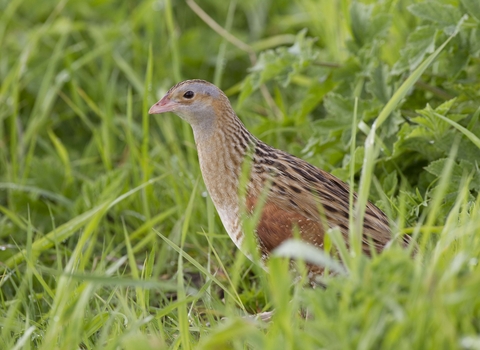
Corncrake ©Peter Cairns/2020VISION
Corncrake
This secretive bird is a member of the rail family, related to coots and moorhens. The breeding call, a rasping rattle, is given mostly at night, sometimes for hours on end.
Scientific name
Crex crexWhen to see
April to SeptemberSpecies information
Category
Statistics
Length: 28cmWingspan: 50cm
Weight: 170g (male), 140g (female)
Classified in the UK as Red under the Birds of Conservation Concern 5: the Red List for Birds (2021). Protected in the UK under the Wildlife and Countryside Act, 1981.
